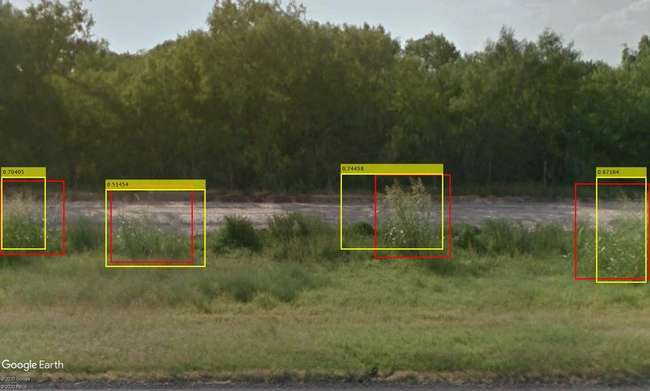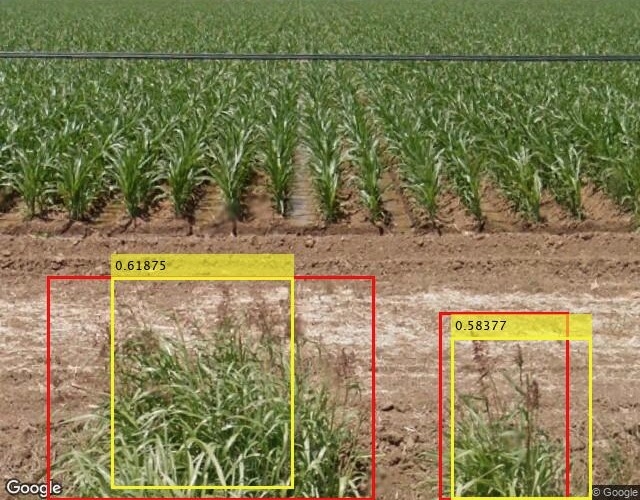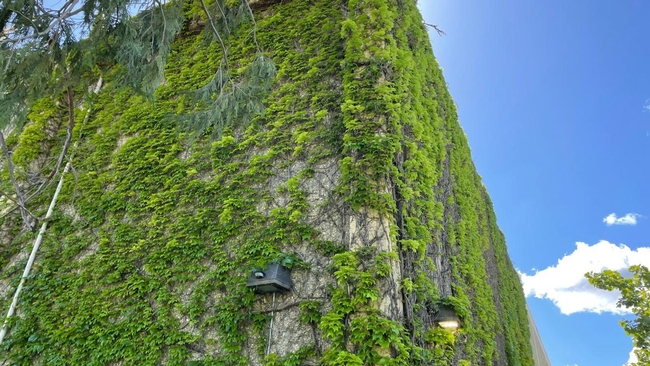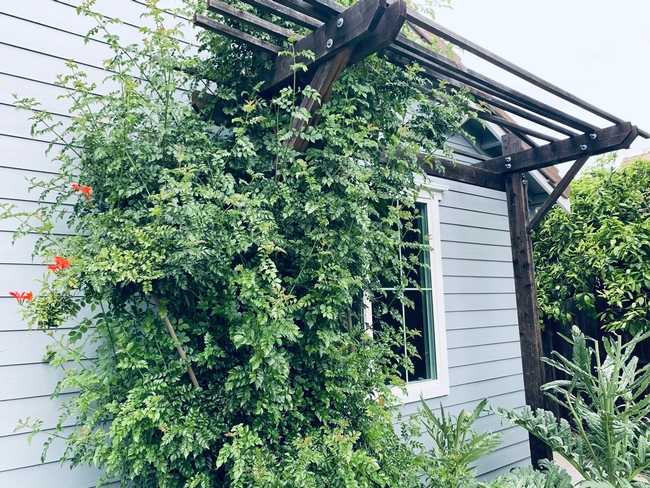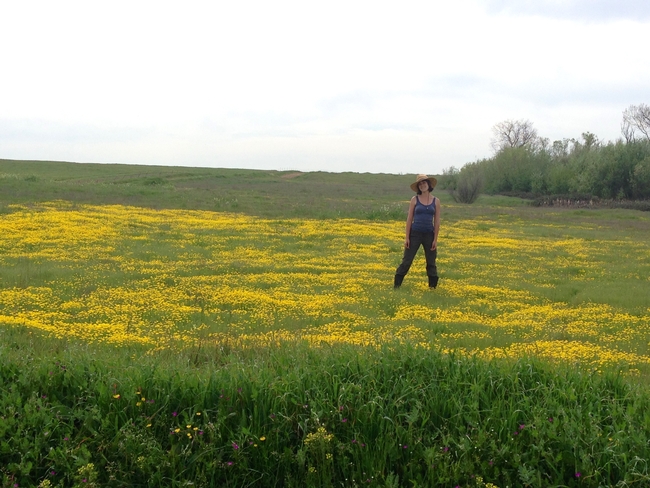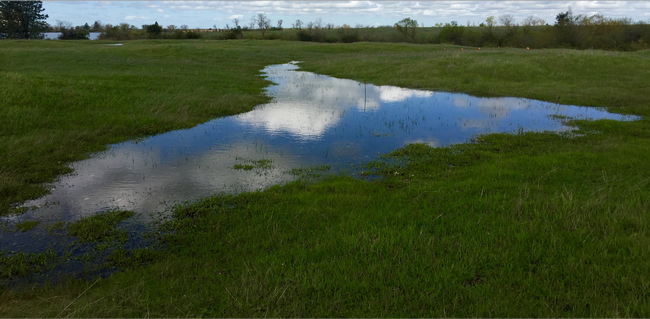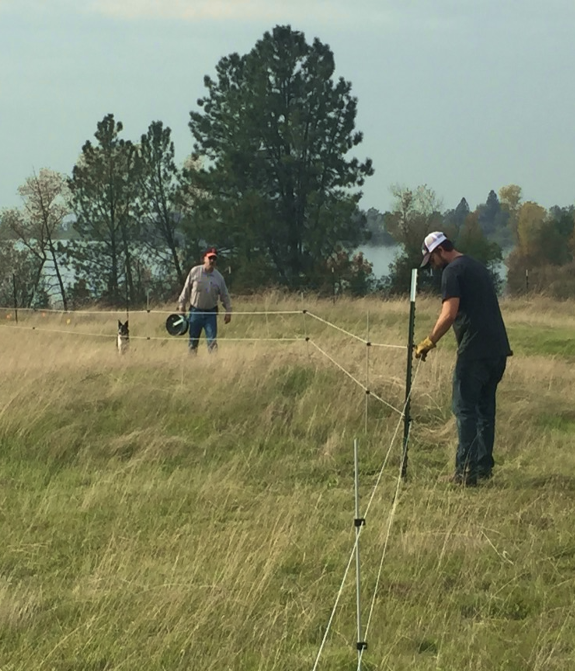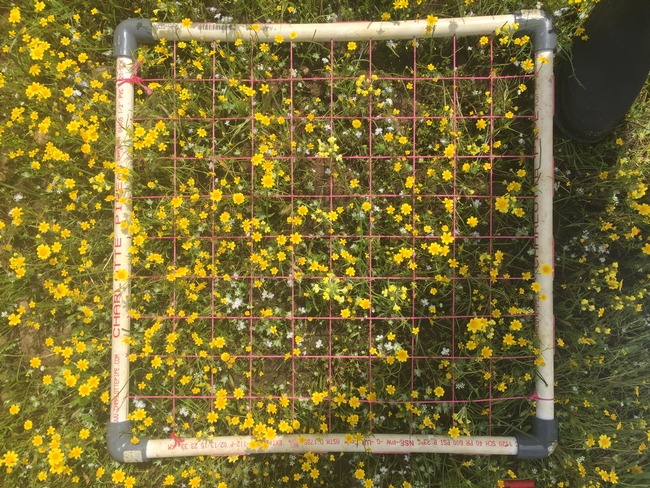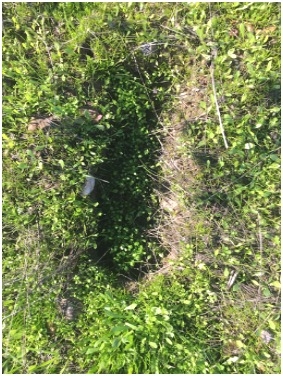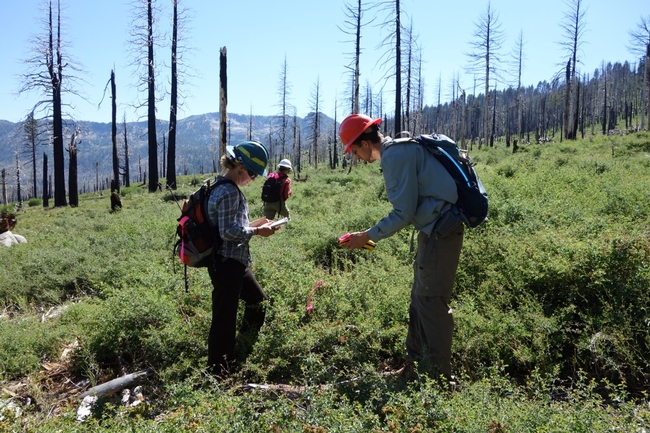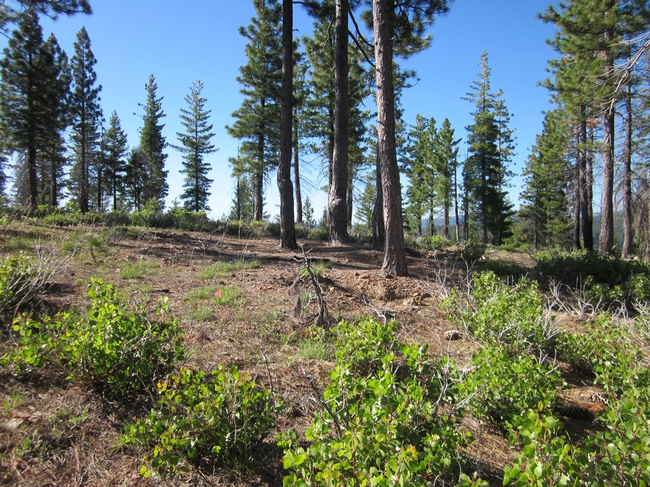Posts Tagged: Plant Sciences
Google Weed View? Professor trains computer to spot invasive weed
Algorithm for AI enables low-cost tracking of invasive plant
To manage johnsongrass, a noxious weed that crowds out cotton and sickens horses, farmers have tried herbicides, burning and hand-pulling. Now, researchers at University of California, Davis, have developed a more high-tech weapon against the invasive weed: artificial intelligence and machine learning.
Using photos from Google's Street View database, UC Davis researchers have tracked down over 2,000 cases of johnsongrass in the Western United States for a fraction of the cost and time that it would take to do drive-by or other in-person surveys. They call their tool Google Weed View.
The advancement could help land managers easily and quickly survey for other problem plants.
“Once the model is trained, you can just go and run it on millions of images from Google Street View,” said Mohsen Mesgaran, an assistant professor in the Department of Plant Sciences at UC Davis. “We have huge flexibility, and its capability can be scaled up very quickly.”
The technique can easily be extended to other plant species. All that is needed is to label the new item in Street View photos and train the algorithm to identify that object in the images.
By providing location information, Google Weed View also offers an opportunity to examine how climate affects the growth and spread of weeds and invasive plants at very large scales.
“I think it can be both useful for management and for people with interests in more basic questions in ecology,” Mesgaran said.
A colleague's query
Mesgaran began looking at using Google's photo database of roadways, streets and highways after Kassim Al-Khatib, a professor of Cooperative Extension in the same department, asked if he could survey Western states for johnsongrass.
Al-Khatib studies where johnsongrass grows, ways to manage it and how this perennial has evolved to be so prevalent and resilient. He's also working with scientists at the University of Georgia to decode the genome of johnsongrass, which is one of the top 10 most invasive weeds worldwide.
Johnsongrass can crowd out native plants, harbor pathogens and affect agriculture. It grows up to 7 feet tall with flowers that are green, violet, dark red or purplish brown depending on maturity, according to a UC Statewide Integrated Pest Management Program briefing page.
“Johnsongrass is a major weed not just in California but worldwide,” Al-Khatib said. “It's very difficult to control. It's a problem on vineyards. It's a problem for cultivated crops. It's a problem on orchards.”
Google Weed View allows for rapid, convenient scanning. It is continuously updated via everyday users with compatible cameras and images collected by Google. “Instead of a day of in-person driving, we can use AI to determine if johnsongrass is in a county or not,” Al-Khatib said.
Setting the parameters
To find the weeds, Mesgaran went to Google Street View, which hosts billions of panoramic photos. It didn't take long to find johnsongrass.
“The pictures are really good quality,” he said. “You can see plants and flowers.”
Street View's photos offer a 360-degree view, so in his request Mesgaran set parameters, based on street direction (bearing), to only see the side view. He also specified latitude and longitude, and other factors. To train the deep, or machine learning model, he chose Texas, where johnsongrass is prevalent.
A student sorted through over 20,000 images from that request to find pictures with johnsongrass and drew rectangular shapes around the weeds. They located 1,000 images.
The labeled photos were fed into a computer to train a deep learning algorithm capable of identifying johnsongrass in Google's images. The model was run again to capture potentially more images containing johnsongrass. These additional images were then labeled and used to further refine the model. With each iteration, the algorithm learned and became more accurate.
“This deep learning model was trained by these images,” Mesgaran said. “Once we had a semi-working model, we ran it against about 300,000 images.”
For Al-Khatib's request, researchers focused on 84,000 miles of main roads in California, Nevada, Oregon and Washington states. The team discovered 2,000 locations with johnsongrass.
Google Weed View cost less than $2,000 to purchase the images and teach the model. A traditional car survey to cover the same area would cost an estimated $40,000 in gas, hotel, food and other costs.
“In a matter of months, we came up with 2,000 records and I can do it for the whole U.S.,” Mesgaran said.
Next up? The entire United States.
This story was originally published on the UC Davis College of Agricultural and Environmental Sciences news site.
Can vines speed urban cooling?
Study explores cooling benefits of fast-growing vines as trees take their time
Perhaps trees aren't the only green solution when it comes to cooling urban spaces and reducing energy costs. Honeysuckle, Virginia creeper, pink trumpet and other vines could be a fast-growing substitute in climate-smart cities of the future.
Researchers from UC Davis are leading a nearly $880,000 federal grant to study how vines may provide cooling and shade in Western states in less time than it takes a tree to grow tall.
“Vines can quickly shade buildings and reduce energy consumption while trees slowly grow to maturity,” said Alessandro Ossola, an assistant professor of plant sciences who is a principal investigator for the project. “We believe vines can be an effective and cheap measure to help cities accelerating climate change adaptation.”
The grant from the U.S. Department of Agriculture's Agricultural Marketing Service will fund work to plant and monitor at least 10 types of vines on trellises in five locations in different climate zones over three years. California Department of Food and Agriculture is administering the grant.
Using less water
Water conservation will be vital as populations rise, climate extremes become more prevalent and the demand for agricultural and drinking water increases. The goal of this research is to identify vines that can help save energy by providing cooling and reduce the need for irrigated water.
“In addition to rapid growth rates, vines can be easily integrated with structures to maximize potential cooling effects,” said Loren Oki, a Cooperative Extension specialist with Department of Plant Sciences, who is the project lead. “But we need to understand the relationships between low water-use plants and their ability to reduce thermal loads on buildings.”
The vines will be planted, supported by a trellis and watered regularly during the first growing season to establish deep roots and healthy shoots. Over the next two years, the vines will experience low, moderate and high water allocations.
The vines will be rated on aesthetics, foliage quality, floral quantity, pest and disease resistance, appearance and other factors. Thermal images of trellis coverage and other environmental measurements will also be taken to assess shading and cooling potential, according to grant documents.
Many vines can be grown along cables and wire nets that are actually detached from walls to avoid direct contact and still provide shade, Ossola said.
“We want to understand which vine characteristics relate to fast growth, reduced water use and increased aesthetic appeal,” he added.
Outreach and education
The findings will enable recommendations to be developed for regions, planners, the landscape industry and the public. It could lead to plants being designated as “water-wise,” “low-water use,” “energy-saving” or “cooling.”
Extensive engagement and outreach will also publicize the information.
“Climate change is a great opportunity for the horticultural industry to innovate and promote climate-ready plant productions,” Ossola said.
USDA funding supports research across state lines to find innovative solutions to regional and national problems, USDA Under Secretary for Marketing and Regulatory Programs Jenny Lester Moffitt said in a news release announcing this and other grants.
“This year's funded projects will address a range of those challenges, from energy and water saving in vine plants, finding cost-effective solutions for heat tolerance and drought, to addressing food safety risks for produce,” Moffitt said.
Scientists from the University of Arizona, University of Washington, Utah State University and the South Coast Research and Extension Center at UC Agricultural and Natural Resources are contributing to the research and will be overseeing vine sites in their states.
This article is reprinted from the UC Davis College of Agricultural and Environmental (CA&ES) website, where it is titled "Could Vines Be the Answers to Speeding Urban Cooling, Water Reduction in the West?"
Once perceived as a problem, conservation grazing by cattle a boon to vernal pools
Giving 1,200-pound cows access to one of California's most fragile and biologically rich ecosystems seems a strange way to protect its threatened and endangered species.
But a recently published study suggests that reintroducing low to moderate levels of cattle grazing around vernal pools – under certain conditions – leads to a greater number and greater variety of native plants.
Ecologists consider vernal pools – ephemeral ponds that form seasonally – “islands of native habitat” amid California's grasslands that are dominated by exotic grasses. These biodiversity hotspots harbor about 200 native species of animals and plants, such as the coyote thistle, which germinates under water and forms a snorkel-like straw to deliver oxygen to its roots – and then “fills in” its stem as the pool dries.
Specially adapted to survive in those stages of wet and dry, many of these species are found only in vernal pools scattered across California – making those pools an urgent priority for conservationists.
During the 1970s and 1980s, vernal pools were fenced off in parts of the state, in the hopes of protecting the flora and fauna from grazing cattle. In the early 2000s, however, UC Davis researcher Jaymee Marty found that grazing was actually crucial to vernal pool biodiversity: once livestock were removed from areas that had been grazed historically, the diversity of plants plummeted.
“Her research was critical to rethinking the best ways to protect the diversity in California's vernal pool ecosystems,” Eviner said.
The Michaels-led study, published in the Journal of Applied Biology, builds on Marty's work, by looking at scenarios where cattle had been blocked from vernal pools for decades, and then observes the rate at which biodiversity returns after reintroduction of the animals. Michaels said she wanted to provide some initial answers to the practical questions that ranchers and land managers have in potentially reintroducing cattle.
“A lot of them had these areas that had been fenced off from grazing for the last 20–30 years, and they were very concerned about what happens if we let cattle back onto these vernal pool grasslands – are there going to be negative impacts because that land had been at rest for a few decades?” Michaels explained.
They discovered that, after reintroducing cattle to areas that had been fenced off since the 1970s, there was a greater abundance of native flora (species like the vernal pool buttercup, bractless hedge-hyssop and bristled downingia), as well as increased diversity among the plants (both in number of species and in how evenly distributed they were).
“Encouragingly, diversity is rapidly restored,” Eviner said, “providing conservationists with strong data to show that rapid action can enhance plant diversity.”
And as for potential worries about cattle making a snack of vernal pool plants, Michaels and her colleagues observed that the cattle appear to be more interested in munching on grasses.
“Anecdotally, we saw very few signs of herbivory on the vernal pool species because the timing is such that [the plants] are underwater for a good part of the late winter and early spring, and then by the time they're blooming, there's plenty of good forage around for the cattle,” Michaels said.
In fact, the cattle seem to be performing a function filled for millennia by native grazers (namely, the once-abundant tule elk), helping to knock down vernal pool species' chief competitor in those transition zones: the grasses.
Instead, microdepressions created by the cattle appeared to encourage the proliferation of native plants. Each hoofprint became a miniature basin – “a vernal pool within a vernal pool.”
“Right in those transition zones, where they could be hosting either the vernal pool species or the upland grasses, just a couple centimeters of soil topography can make a big difference,” Michaels explained. “If a cow comes and steps in that transition zone, and that lowers the soil surface so it stays inundated a little longer, you end up seeing these pockets of vernal pool species that are able to persist.”
Michaels is currently conducting a follow-up study on the hoofprints to pinpoint their role in boosting native plant abundance and biodiversity. Because the prints can last for several years, they might be able to deliver some enduring benefits – and land managers might not have to bring cattle in to graze the pools as often.
“If it's really the hoofprints making the big difference, maybe we don't need to graze every year – only during certain times of year when we know the hoofprints will form well and harden, and then we're good for a few years,” Michaels said.
High Society--with Bad Breath?
It was right where it belonged--by the UC Davis Department of Plant Sciences. As I returned from a meeting in the building today, something green...
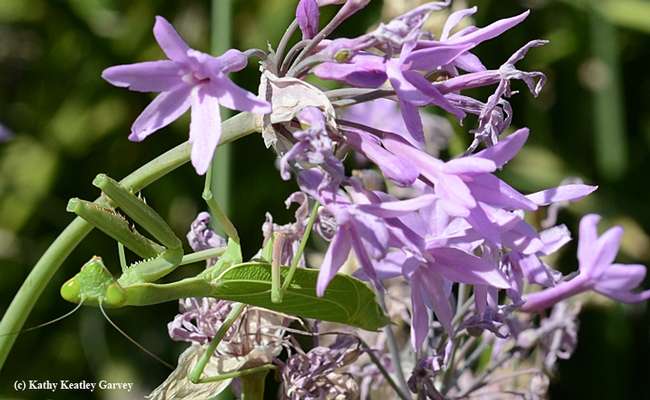
A praying mantis hanging out in the society garlic next to the UC Davis Department of Plant Sciences building. (Photo by Kathy Keatley Garvey)
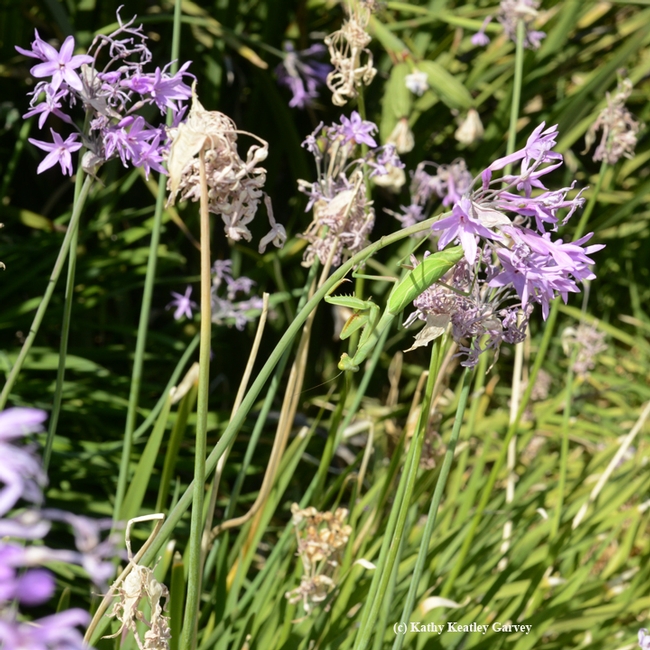
Find the praying mantis. Amid all the green, there's a green predator in the society garlic. (Photo by Kathy Keatley Garvey)
Connecting wildfires to climate change and drought
Longer summers, less moisture and warmer climates are predicted for California's Sierra Nevada mountains. These changing patterns bring frequent droughts and extended wildfire seasons — as seen from the current extreme drought. The question no longer is whether wildfires will be more common or more intense — they already are — but how forest managers want these fires to burn.
Jens Stevens, a postdoctoral researcher in disturbance ecology at the University of California, Davis, has tracked how forests thinned for wildfire react to high-intensity burns. The answers he found touch on growing concerns over how the state can protect its forests.
Under the context of climate change, Stevens studies how understory plants recover from wildfires, measuring the effects fuel treatments — such as the thinning of small trees — have on the way these forests burn.
Historically Sierra forests had gaps and openings, which prevented the spread of fires. More than a century ago land management agencies began a campaign of extinguishing all wildfires. Today's forest floors are blanketed with litter — fallen branches, leaves and shrubs — and many of the fire-tolerant pines have been replaced by firs, which handle shade well but act as fuel sources.
Stevens' research showed fuel treatments encourage resilience to wildfires, giving forests a greater ability to withstand a burn. Under really hot, dry summer conditions this makes a powerful difference.
“If you get warmer temperatures you're going to dry out the fuels,” says Stevens. “If we want to retain forest-dominated landscapes, we don't have the choice of doing nothing, because eventually these stands are going to burn."
To preserve forests, Stevens looked to native plant diversity under each management strategy. After a high severity fire, the tree canopy is non-existent. This new high-light environment favors other species, such as shrubs and flowering plants, which crowd out young trees.
In treating a stand before a fire, land managers are already encouraging plant diversity and when the stand burns, diversity increases even more, Stevens discovered.
While the treatments do protect the forest and encourage plant diversity, they are expensive and lead to uncertainty over how sensitive wildlife species are affected. Yet these areas will burn eventually, Stevens argues. The choice is either a more open forest or no forest at all.
He points out research by UC Davis ecologist Malcolm North, which shows the current pace of treatments can't keep up with the extent of Sierra forests that have been fire suppressed. The US Forest Service can treat up to 40 percent of a forest before managers must start over for follow-up treatments. The other 60 percent doesn't get touched.
“So the only real way to address that is to let the fire do the work for you,” says Stevens.
The proposal North and his colleagues arrived at relies on “firesheds.” These fire-prone areas would have boundaries that allow officials to efficiently manage the fires. If a burn begins after a treatment, they don't put it out. Allowing the fire to burn fuels they would otherwise be removing frees up resources to treat other areas.
“So if it's going to burn,” says Stevens, “you need to figure out ways the fire's going to give you your desired outcome.”
Watch Stevens explain more in his seminar.
This post was adapted from a longer piece by the UC Davis Department of Plant Sciences.


